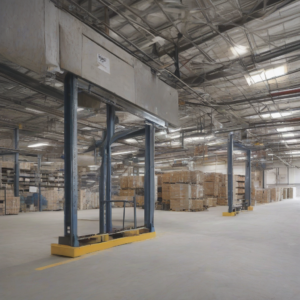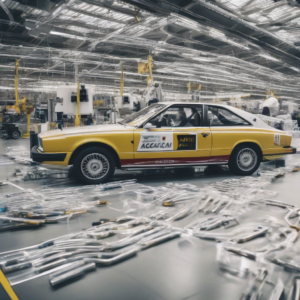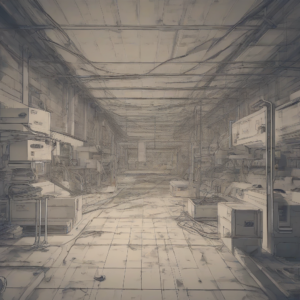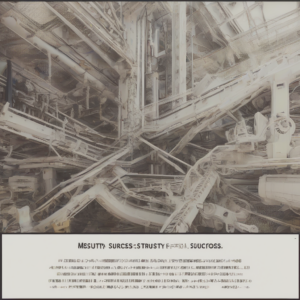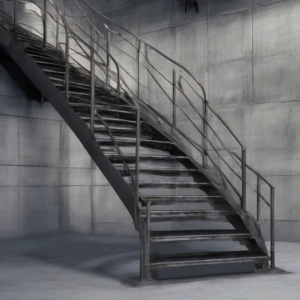Revolutionizing Industry: A Deep Dive into Industrial Automation Companies
Industrial automation companies are at the forefront of a technological revolution, transforming manufacturing, logistics, and various other sectors. These companies design, develop, and implement automated systems that enhance efficiency, productivity, and safety across diverse industrial settings. This exploration delves into the multifaceted world of these companies, examining their key players, technological advancements, industry trends, and the future of automation.
Key Players in the Industrial Automation Landscape
The industrial automation sector boasts a diverse range of companies, each specializing in different aspects of automation technology. These range from multinational conglomerates to smaller, specialized firms. Some of the prominent players include:
- ABB: A global leader offering a wide portfolio of robotics, motion control, and power grid automation solutions.
- Siemens: A major player in industrial automation, providing comprehensive solutions encompassing automation technology, digitalization, and industrial software.
- FANUC: Renowned for its expertise in robotics and factory automation, offering a wide range of robots and CNC systems.
- KUKA: A leading robotics manufacturer known for its industrial robots and automation systems, particularly in automotive manufacturing.
- Rockwell Automation: A prominent provider of industrial automation and information solutions, specializing in industrial control systems and software.
- Schneider Electric: A global energy management and automation company offering solutions for industrial automation, building automation, and energy efficiency.
- Mitsubishi Electric: A significant player in industrial automation, offering a vast array of products including PLCs, industrial robots, and motion control systems.
- Omron: Known for its automation solutions, including industrial automation components, sensors, and robotics.
- Eaton: A power management company with a strong presence in industrial automation, providing solutions for power distribution, control, and safety.
- Bosch Rexroth: Specializes in drive and control technologies for industrial automation, offering a wide range of hydraulics, pneumatics, and electromechanical components.
This list is not exhaustive, as numerous other companies contribute significantly to the industrial automation sector, reflecting the breadth and depth of this ever-evolving field.
Technological Advancements Driving Industrial Automation
Continuous technological innovation fuels the progress of industrial automation. Key advancements include:
- Robotics: The development of increasingly sophisticated robots with enhanced dexterity, intelligence, and collaborative capabilities is transforming manufacturing processes. Cobots (collaborative robots) are particularly significant, enabling humans and robots to work safely and efficiently together.
- Artificial Intelligence (AI) and Machine Learning (ML): AI and ML algorithms are being integrated into industrial automation systems to enable predictive maintenance, process optimization, and improved decision-making. These technologies empower machines to learn from data and adapt to changing conditions.
- Industrial Internet of Things (IIoT): The IIoT connects industrial machines and systems, enabling real-time data collection, analysis, and remote monitoring. This connectivity enhances efficiency, improves productivity, and facilitates predictive maintenance.
- Computer Numerical Control (CNC) Machining: CNC machines are automated tools controlled by computer programs, enabling precise and repeatable manufacturing processes. Advancements in CNC technology continue to improve precision, speed, and flexibility.
- Programmable Logic Controllers (PLCs): PLCs are the brains of many automated systems, controlling the operation of machinery and processes. Modern PLCs are becoming increasingly powerful and versatile, enabling the integration of advanced technologies like AI and IIoT.
- Industrial Vision Systems: These systems use cameras and image processing techniques to inspect products, guide robots, and monitor processes. Advancements in image processing technology enhance the accuracy and speed of these systems.
- SCADA (Supervisory Control and Data Acquisition): SCADA systems monitor and control industrial processes from a central location, enabling real-time monitoring and control of complex systems.
- Digital Twins: Digital twins are virtual representations of physical assets or processes, enabling simulation, optimization, and predictive maintenance. They provide valuable insights into system performance and potential issues.
Industry Trends Shaping the Future of Industrial Automation
Several key trends are shaping the future of industrial automation:
- Increased Adoption of Robotics and Automation: Companies across various industries are increasingly adopting robots and automated systems to improve efficiency, productivity, and competitiveness.
- Growth of the IIoT and Big Data Analytics: The IIoT is enabling the collection of vast amounts of data from industrial systems, providing opportunities for data-driven decision-making and process optimization.
- Rise of AI and ML in Industrial Automation: AI and ML are transforming industrial automation by enabling intelligent systems that can learn, adapt, and optimize processes autonomously.
- Focus on Cybersecurity: As industrial systems become increasingly interconnected, cybersecurity is becoming a critical concern. Companies are investing in robust security measures to protect their automated systems from cyber threats.
- Demand for Skilled Labor: The increasing complexity of industrial automation systems is creating a demand for skilled workers who can design, implement, and maintain these systems.
- Emphasis on Sustainability: Companies are increasingly focusing on sustainability, incorporating energy-efficient technologies and reducing waste in their automation systems.
- Integration of Human-Robot Collaboration (HRC): The collaboration between humans and robots is becoming increasingly prevalent, with cobots playing a vital role in enhancing productivity and safety.
- Cloud-Based Automation Solutions: Cloud computing is enabling the development of flexible and scalable automation solutions, providing greater accessibility and reducing infrastructure costs.
- Edge Computing in Industrial Settings: Processing data closer to the source (the edge) reduces latency and bandwidth requirements, enabling faster response times and improved real-time control.
- Increased Focus on Predictive Maintenance: Predictive maintenance using AI and sensor data reduces downtime and maintenance costs by predicting potential equipment failures before they occur.
The Impact of Industrial Automation Companies
Industrial automation companies have a profound impact on various aspects of society and the economy:
- Enhanced Productivity and Efficiency: Automated systems significantly enhance productivity and efficiency in manufacturing and other industries, leading to increased output and reduced costs.
- Improved Product Quality and Consistency: Automation enables the production of high-quality, consistent products with minimal defects.
- Increased Safety in the Workplace: Automated systems can perform dangerous or repetitive tasks, reducing the risk of workplace injuries.
- Economic Growth and Job Creation: The industrial automation sector itself creates numerous jobs in areas like engineering, software development, and manufacturing.
- Global Competitiveness: Companies that adopt industrial automation technologies gain a competitive edge in the global marketplace.
- Transformation of Industries: Industrial automation is transforming various industries, including manufacturing, logistics, energy, and healthcare.
- Advancements in Technology: The constant drive for innovation in industrial automation leads to advancements in various technologies, benefiting society as a whole.
- Addressing Labor Shortages: In industries facing labor shortages, automation can help address these challenges by automating tasks and increasing productivity.
- Improved Supply Chain Management: Automation plays a crucial role in optimizing supply chains, improving efficiency and reducing costs.
- Enabling New Business Models: Industrial automation facilitates the development of new business models, such as on-demand manufacturing and customized production.
Challenges and Considerations
Despite the numerous benefits, industrial automation also presents some challenges and considerations:
- High Initial Investment Costs: Implementing industrial automation systems can involve significant upfront investment costs.
- Need for Skilled Labor: The complexity of automated systems requires skilled workers to design, implement, and maintain them.
- Integration Challenges: Integrating new automation systems with existing infrastructure can be complex and challenging.
- Cybersecurity Risks: Interconnected industrial systems are vulnerable to cyberattacks, requiring robust security measures.
- Job Displacement Concerns: Automation can lead to job displacement in some sectors, requiring retraining and workforce adaptation strategies.
- Ethical Considerations: The increasing use of AI and robotics raises ethical concerns about bias, accountability, and the impact on human workers.
- Regulatory Compliance: Companies must comply with various regulations and safety standards when implementing automation systems.
- Return on Investment (ROI): It’s crucial to carefully assess the ROI of automation projects to ensure the investment is justified.
- Data Management and Privacy: The large amounts of data generated by automated systems require effective data management and privacy protection measures.
- Maintaining System Uptime: Ensuring the reliable and continuous operation of automated systems is critical for maintaining productivity.
